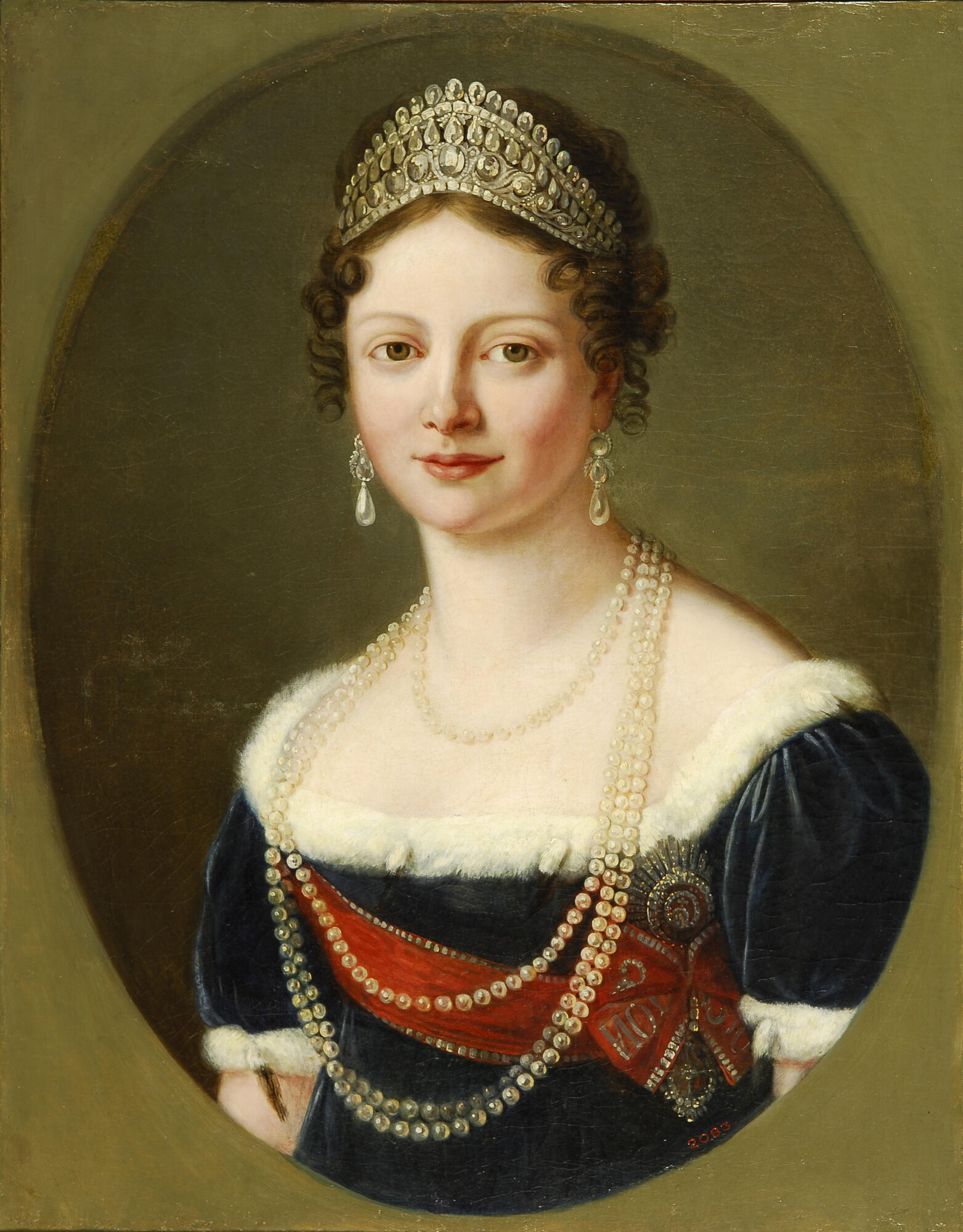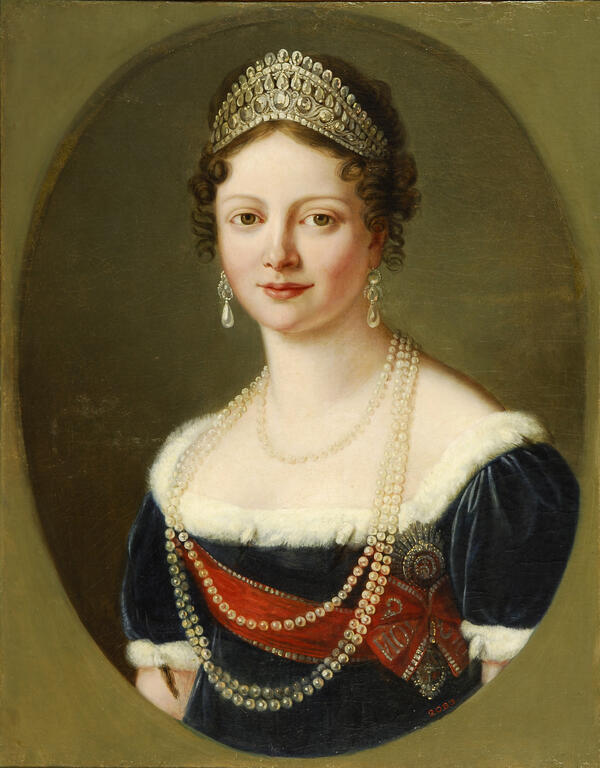The portrait of Grand Duchess Ekaterina Pavlovna was painted by an unknown artist. The painter chose a neutral background and concentrated all his skills on the central figure herself. He carefully conveyed the status attributes important to her. The young woman is dressed in a rich navy blue dress trimmed with white fur along the neckline. She wears a tiara made of precious stones on her head. A red ribbon runs under the chest of the Grand Duchess — it ends with a bow, above which is the sign of the order of the Holy Great Martyr Catherine. The order was given to the daughters of rulers immediately, upon birth.
The fourth daughter of Emperor Pavel I and Maria Feodorovna was one of the favorites of Empress Catherine II. The charming Ekaterina Pavlovna was a bright star of the Russian court in the early 19th century. She combined graceful beauty, subtle intelligence and considerable ambition. Alexander I adored his sister and considered her one of his closest friends.
The girl’s upbringing was strict, but at the same time diverse. In addition to the required several foreign languages - French, German and English — Ekaterina Pavlovna knew Russian well, she spoke and wrote easily in it. For women from high society at the time, this was very rare.
Ekaterina Pavlovna was called “the beauty of the royal house” and “the beauty of Russia”. Prince Pyotr Bagration was in love with her, and in her youth she was the most desirable bride. When the girl got married, one of her contemporaries wrote about her: “The Grand Duchess was a beauty in herself: dark-haired, with dark blue eyes, white, and fluent in Russian. Everyone in Tver loved her very much for her courteous disposition. She often threw balls in the palace and equally affably welcomed noblemen, merchants, and even young officers; asking everyone to have fun without status.”
It was the Grand Duchess Ekaterina Pavlovna who was one of the first to support the idea of convening the people’s militia, and from her court peasants formed the ‘Jaeger Grand Duchess Ekaterina Pavlovna’s battalion’, which participated in many battles. Her beauty delighted not only fans, but also artists, so many of them painted her portraits.
The fourth daughter of Emperor Pavel I and Maria Feodorovna was one of the favorites of Empress Catherine II. The charming Ekaterina Pavlovna was a bright star of the Russian court in the early 19th century. She combined graceful beauty, subtle intelligence and considerable ambition. Alexander I adored his sister and considered her one of his closest friends.
The girl’s upbringing was strict, but at the same time diverse. In addition to the required several foreign languages - French, German and English — Ekaterina Pavlovna knew Russian well, she spoke and wrote easily in it. For women from high society at the time, this was very rare.
Ekaterina Pavlovna was called “the beauty of the royal house” and “the beauty of Russia”. Prince Pyotr Bagration was in love with her, and in her youth she was the most desirable bride. When the girl got married, one of her contemporaries wrote about her: “The Grand Duchess was a beauty in herself: dark-haired, with dark blue eyes, white, and fluent in Russian. Everyone in Tver loved her very much for her courteous disposition. She often threw balls in the palace and equally affably welcomed noblemen, merchants, and even young officers; asking everyone to have fun without status.”
It was the Grand Duchess Ekaterina Pavlovna who was one of the first to support the idea of convening the people’s militia, and from her court peasants formed the ‘Jaeger Grand Duchess Ekaterina Pavlovna’s battalion’, which participated in many battles. Her beauty delighted not only fans, but also artists, so many of them painted her portraits.



